| |
|
Xiamen Oil Paintings, Wholesale Direct!
|
|
100% hand painted, 100% cotton canvas, 100% money back if not satisfaction. |
|
|
|
|
ART WORKS INDEX
A
B
C
D
E
F
G
H
I
J
K
L
M
N
O
P
Q
R
S
T
U
V
W
X
Y
Z
|
|
ARTISTS INDEX
A
B
C
D
E
F
G
H
I
J
K
L
M
N
O
P
Q
R
S
T
U
V
W
X
Y
Z
|
|
|
|
|
|
|
|
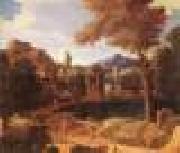 |
MILLET, Francisque
|
|
French Baroque Era Painter, 1642-1679
French painter. The little that is known about his life is derived from the chapter on Flemish, German and Dutch painting in Le Comte's work (1699). His oeuvre remains ill-defined, in part because he seems never to have signed his paintings and in part because after his death (by poisoning) both his son Jean Millet (c. 1666-1723) and later his grandson Joseph Millet (c. 1688-1777) took the name Francisque and continued to paint landscapes in his style. The firmest point of reference for attributions to Millet is a series of 28 engravings after his works made by one Theodore, possibly a pupil. They are all landscapes, some with religious, mythological or heroic genre subjects,
|
|
|
|
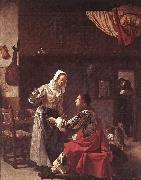 |
MIERIS, Frans van, the Elder
|
|
Dutch painter (b. 1635, Leiden, d. 1681, Leiden).
was a Dutch genre and portrait painter. The leading member of a Leiden family of painters, his sons Jan (1660-1690) and Willem (1662?C1747) and his grandson Frans van Mieris the Younger (1689?C1763) were also accomplished genre painters. Frans was the son of Jan Bastiaans van Mieris, a goldsmith, carver of rubies and diamond setter at Leiden. His father wished to train him to his own business, but Frans preferred drawing, and took service with Abraham Toorenvliet, a glazier who kept a school of design. In his father's shop he became familiar with the ways and dress of people of distinction. His eye was fascinated in turn by the sheen of jewelry and stained glass; and, though he soon gave up the teaching of Toorenvliet for that of Gerard Dou and Abraham van den Tempel, he acquired a manner which had more of the finish of the exquisites of the Dutch school than of the breadth of the disciples of Rembrandt. It should be borne in mind that he seldom chose panels of which the size exceeded 12 to 15 inches, and whenever his name is attached to a picture above that size we may surely assign it to his son Willem or to some other imitator. Unlike Dou when he first left Rembrandt, or Jan Steen when he started on an independent career, Mieris never ventured to design figures as large as life. Characteristic of his art in its minute proportions is a shiny brightness and metallic polish. The subjects which he treated best are those in which he illustrated the habits or actions of the wealthier classes; but he sometimes succeeded in homely incidents and in portrait, and not unfrequently he ventured on allegory. He repeatedly painted the satin skirt which Ter Borch brought into fashion, and he often rivalled Ter Borch in the faithful rendering of rich and highly-coloured woven tissues. But he remained below Ter Borch and Metsu, because he had not their delicate perception of harmony or their charming mellowness of touch and tint, and he fell behind Gerard Dou, because he was hard and had not his feeling for effect by concentrated light and shade. In the form of his composition, which sometimes represents the framework of a window enlivened with greenery, and adorned with bas-reliefs within which figures are seen to the waist, his model is certainly Dou. It is a question whether Houbraken has truly recorded this master's birthday. One of his best-known pieces, a party of ladies and gentlemen at an oyster luncheon, in the Hermitage at St Petersburg, bears the date of 1650. Celebrated alike for composition and finish, it would prove that Mieris had reached his prime at the age of fifteen. Another beautiful example, the "Doctor Feeling a Lady's Pulse" in the gallery of Vienna, is dated 1656; and Waagen, in one of his critical essays, justly observes that it is a remarkable production for a youth of twenty-one. In 1657 Mieris was married at Leiden in the presence of Jan Potheuck, a painter, and this is the earliest written record of his existence on which we can implicitly rely. Of the numerous panels by Mieris, twenty-nine at least are dated--the latest being an allegory, long in the Ruhl collection at Cologne, illustrating what he considered the kindred vices of drinking, smoking and dicing, in the year 1680. Mieris had numerous and distinguished patrons. He received valuable commissions from Archduke Leopold, the elector-palatine, and Cosimo III de' Medici, grand-duke of Tuscany. His practice was large and lucrative, but never engendered in him either carelessness or neglect. If there be a difference between the painter's earlier and later work, it is that the former was clearer and more delicate in flesh, whilst the latter was often darker and more livid in the shadows. When he died his clients naturally went over to his son Willem, who in turn bequeathed his painting-room to his son Frans. But neither Willem nor Frans the younger equalled Frans the elder.
|
|
|
|
|
|
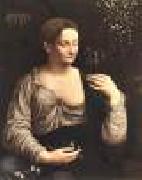 |
MELZI, Francesco
|
|
Italian Painter, 1493-1570
Italian painter and draughtsman. Belonging to a noble Lombard family, he began to attend the workshop of Leonardo da Vinci around 1508, during Leonardo's second visit to Milan. From that time on he was always associated with Leonardo, whose favourite pupil he became: he followed Leonardo to Rome in 1513 and moved with him to France in 1515, staying with him until his death in 1519.
|
|
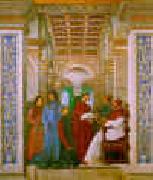 |
Melozzo da Forli
|
|
1438-1494
Italian
Melozzo da Forli Location
Melozzo came, it is supposed, of a wealthy family named Ambrosi from Forl??. Nothing is known about his early years, and it is only a hypothesis that he formed at the Forlivese school of art, then ruled by Ansuino da Forl??, for they were both influenced by the Mantegna manner.
It has been said that he became a journeyman and color-grinder to some of the best masters, in order to prosecute his studies; this lacks confirmation. His presence his first mentioned in his birthplace in 1460 and again in 1464. Around this period, together with Antoniazzo Romano, frescoed the Bessarione chapel in the basilica dei Santi Apostoli in Rome. Melozzo presumably moved to in Urbino between 1465 and 1475: here he met the highly theoretical and mathematical Piero della Francesca, who profoundly influenced the Melozzo style and use of perspective. He should have also studied the architectures by Bramante and other Flemish painters then working for the duke Federico da Montefeltro: perhaps Melozzo worked with Justus of Ghent and Pedro Berruguete to the decoration of the studiolo of the famous Ducal Palace of the city.
In 1475 Melozzo transferred to Rome, though some authorities claim his presence in Rome ten (or five) years earlier to work in the Basilica di San Marco. In 1477 he finished his first major work in the new seat, a fresco now transferred to canvas and placed in the Pinacoteca Vaticana, representing the appointment of Bartolomeo Platina by Sixtus IV as librarian of the restored Vatican Library. In 1478 he was one of the original members of the academy of St Luke, founded by Sixtus IV to unite the main painters working in the city.
About 1480 Melozzo was commissioned by Pietro Riario to paint the vault of the apse in the basilica dei Santi Apostoli in Rome, his subject being the Ascension. The figure of Christ is so boldly and effectively foreshortened that it seems to burst through the vaulting; this fresco was taken down in 1711, and the figure of Christ is now in the Quirinal Palace; while some of the other portions, almost Raphaelesque in merit, are in the sacristy of St Peter: a hall in the Vatican Museums is designed for angels and apostles by Melozzo taken down the same fresco. Another work of the Roman period is an Annunciation that can still be seen in the Pantheon.
Melozzo last work in Rome is a chapel, now destroyed, in the church of Santa Maria in Trastevere. After the death of Sixtus IV in 1484 he moved from Rome to Loreto. Here he painted the fresco in the cupola of San Marco sacristy in the basilica della Santa Casa, commissioned by cardinal Girolamo Basso della Rovere. It is one of the first examples of a cupola decorated both with architectures and figures, with a profound influence from the Camera Picta by Mantegna.
In 1489 Melozzo returned in Rome. In this second period he probably drew some cartoons for the mosaics of Jesus blessing in the St. Helen chapel of the basilica of Santa Croce in Gerusalemme.
Pope Sixtus IV appoints Bartolomeo Platina prefect of the Vatican Library, c. 1477 (fresco) (Vatican Museums)Melozzo also painted the cupola of the Capuchin church at Forl??, destroyed in 1651; and it has been said that he executed at Urbino some of the portraits of great men (Plato, Dante, Sixtus IV, etc.) which are now divided between the Barberini Palace and the Campana collection in Paris. In 1493 he worked to some ceilings of the Palazzo Comunale of Ancona, which have gone lost. Eventually Melozzo moved to Forl??, where, together with his pupil Marco Palmezzano, decorated the Feo Chapel in the church of San Biagio, which was destroyed during World War II. The Pinacoteca of Forl?? houses a fresco by Melozzo, termed the Pestapepe, or Pepper-grinder, originally painted as a grocer sign; it is an energetic specimen of rather coarse realism, now much damaged. It is the only non-religious subject by Melozzo.
|
|
|
|
|
|
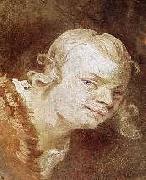 |
MAULBERTSCH, Franz Anton
|
|
Austrian Painter, 1724-1796
Austrian painter. His work as a painter of both oil paintings and frescoes on religious, mythological and occasionally worldly themes spanned the second half of the 18th century, adapting a Late Baroque training to the onset of Neo-classicism but remaining strikingly individual throughout. His fresco work, mostly still in situ in widespread central European locations, came at the end of an artistic tradition and was for long neglected, being far from major cultural centres; but it is now seen to establish him as one of the leading painters of his century
|
|
|
|
|
|
|
|
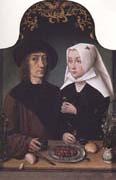 |
Master of Frankfurt
|
|
Flemish Northern Renaissance Painter, 1460-ca.1533.South Netherlandish painter. He takes his name from two paintings commissioned by patrons from Frankfurt am Main. His chief importance lies in his continuing the great tradition of 15th-century Netherlandish painting (particularly the compositions of Rogier van der Weyden and Hugo van der Goes) well into the 16th century, his development of a markedly earthy figure type, his apparently innovative management of a large workshop that 'mass-produced' paintings for the open market and his status
|
|
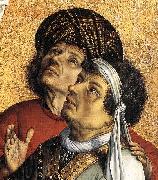 |
Master Of Flemalle
|
|
Robert Campin (c. 1375 - 26 April 1444), now usually identified as the artist known as the Master of Flemalle, is usually considered the first great master of Flemish and Early Netherlandish painting. This had been a matter of controversy for decades; Campin's life is relatively well documented for the period, but no works in assessable condition could be securely connected with him, whilst a corpus of work had been attached to the unidentified "Master of Flemalle", named after the supposed origin of a work.
Campin seems to have had relatives in Valenciennes. He first appears as settled in Tournai from the archives of 1405-6, as a free master of the guild of painters, and he bought citizenship in 1410, which suggests he was not born there. He eventually attained the office of dean of the guild, and wardenship of a church and other civic offices, and was running a large workshop. By 1432, however, he lost his civic positions because of scandals, and probably his role in political disturbances in the city. In 1429 he was found guilty of withholding evidence, and sentenced to go on a pilgrimage, and in 1432 was convicted of adultery and banished for a year. Margaret of Burgundy, wife of the Count of Holland and sister of John the Fearless, Duke of Burgundy intervened on his behalf, and this was reduced to a fine. The dated Werl Altarpiece (1438) shows he continued to work (the two outer wings are in the Prado; the main panel is lost).
|
|
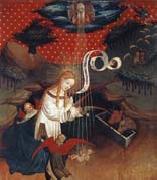 |
Master Francke
|
|
German painter (early 15th century, active in Hamburg). respectively German for "Master Francke" and Latin for "Brother Francke", was a North German Gothic painter and Dominican friar, born ca. 1380 in the Lower Rhine region or possibly Zutphen in the Netherlands, who died ca. 1440, probably in Hamburg, where he was based at the end of his known career. He is called "Fratre Francone Zutphanico" ("Brother Frank of Zutphen") in one document. He may have trained as an illuminator and painter in France or the Netherlands, and later worked in Munster, before joining in St John's Friary in Hamburg by 1424 at the latest.
Two main altarpieces attributed to him survive, dedicated to St Thomas of Canterbury and Saint Barbara, in an unusually intense style, showing awareness of French and Early Netherlandish court art. He probably arrived in Hamburg after the death in 1415 of the previous leading artist there, Master Bertram, and shows little or no influence from him, but he may have been influenced by the more courtly style of Conrad von Soest, about ten years older than Francke, who worked to the south in Westphalia.
The Hamburg association of traders to England commissioned an altarpiece from "Mester Francke[nn]" in 1424; the contract does not survive, but is mentioned in their memorial book. This is probably the "St Thomas (of Canterbury) Altarpiece", completed in 1436, of which parts survive in the Kunsthalle, Hamburg. The rather earlier St Barbara Altarpiece may have been commissioned for Finland, where it surfaced a century ago. The "Thomas Altar" has eight surviving scenes, but is missing its main panel and several others. The "Barbara Altar" has also eight scenes, on both sides of the wings to a carved wood central panel by another artist. At least two other panels are in museum collections. Francke was almost entirely forgotten after the Renaissance until the end of the 19th century when, like Master Bertram, he was rediscovered and published by Alfred Lichtwart, Director of the Hamburg Kunsthalle
|
|
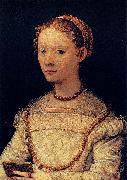 |
Maso da San Friano
|
|
(1536-1571) was an Italian painter active in Florence. His real name was Tomaso D'Antonio Manzuoli. He was born in San Friano and died in Florence.
According to Giorgio Vasari, Maso was a pupil of Pier Francesco Foschi while others claim it was Carlo Portelli. He collaborated with an elder Michelangelo on some projects.
His altarpiece of the Visitation was painted in 1560 for the church of San Pier Maggiore of Florence - now in Trinity Hall Chapel, Cambridge, England. A similar work can be seen in the Prato cathedral. After 1561, he painted in the church of Ognissanti, Florence and in the church of Santa Felicita. He participated in the decoration of the Studiolo of Francesco I with an oval canvas relating the Fall of Icarus story (1572). The canvas has an affected milling in individuals below and an anomalous perspective; both are classic features of mannerist painting. His second contribution Mining of Diamonds. A portrait of Ferdinando I de' Medici (1570) by Maso can be found in the Town Council Hall of Prato.
He is thought to be one of part of the Contra-Maniera or Counter-Mannerism movement in Florence. His most important pupils were Jacopo da Empoli and Alessandro Fei.
One of his paintings, thought to be of Cosimo I de Medici in 1560, is believed to be the oldest to show a watch
|
|
|
|
|
|
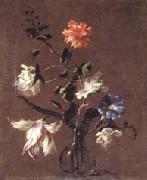 |
Mario Dei Fiori
|
|
Italian painter , Penna Fermana 1603- Rome 1673
Italian painter. He was the first and most famous Roman painter to specialize in flower-pieces and one of only four still-life artists included by Leone Pascoli in his collection of artists' biographies. The early sources and old inventories attribute many flower paintings in distinguished Roman collections to the Caravaggesque painter Tommaso Salini, and since the 18th century Mario's name has been linked with his, and it has been assumed that he trained with Salini. This apprenticeship is difficult to document, yet a comparison of Mario's pictures with inventory descriptions of works by Salini confirms that Mario was influenced by his art. To the minute observation of various kinds of flowers, Mario added a refined sense of design and an interest in effects of light, still linked to Caravaggio in the use of a dark background.
|
|
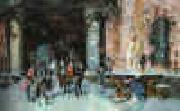 |
Mariano Fortuny y Marsal
|
|
1838-1874
Spanish
Mariano Fortuny y Marsal Gallery
He was born in Reus, a town near Taragona in the autonomous community of Catalonia in Spain. His father died when he was an infant, his mother by age 12, thus Mariano was raised by his grandfather, a cabinet-maker. His grandfather taught him to make wax figurines. At the age of 9, at a public competition in his town a local patron, Domingo Soberno, encouraged further study. At the age of 14 years he moved to Barcelona with his grandfather. A sculptor, Domingo Taleru, secured him a pension of to allow him to attend the Academy of Barcelona. There he studied for four years under Claudio Lorenzale, and in March of 1857 he gained a scholarship that entitled him to two years of studies in Rome starting in 1858. There he studied drawing and grand manner styles.
In 1859, he was called by the Spanish government to depict the campaigns of the Spanish-Moroccan War. The expedition lasted for only about six months, and he returned to Spain in the summer of 1860.
The battle of Tetuan by Mariano Fortuny (1863-73)Since the days of Velazquez, there had been a tradition in Spain of memorializing battles and victories in paint; and on the basis of his experiences, Fortuny was commissioned by the city of Barcelona to paint a large canvas diorama of the capture of the camps of Muley-el-Abbas and Muley-el-Hamed by the Spanish army. He began his composition of The battle of Tetuan on a canvas fifteen metres long; but though it worked on and off on it during the next decade, he never finished it.
The greater influence of this travel on Fortuny was his subsequent fascination with the exotic themes of the world of Morocco, painting both individuals and imagined court scenes. He visited Paris in 1868 and shortly afterwards married Cecilia de Madrazo, the daughter of Federico Madrazo, who would become curator of the Prado Museum in Madrid. Together, they had a son, Mariano Fortuny y Madrazo, who became a well-known fashion and tapestry designer. Another visit to Paris in 1870 was followed by a two years' stay at Granada, but then he returned to Rome, where he died somewhat suddenly on the 21st of November 1874 from an attack of tertian ague, or malaria , contracted while painting in the open air at Naples and Portici in the summer of 1874.
Fortuny paintings are colorful, with a vivacious iridescent brushstroke, that at times recalls the softness of Rococo painting but also anticipates impressionist brushwork, Fortuny??s recollection of Morocco is not a costume ball, but a fierce, realistic portrait which includes bare-chested warriors. Richard Muther states:
??his marvellously sensitive eye ?? discerned the stalls of Moorish carpet-sellers, with little figures swarming, and the rich display of woven stuffs of the East; the weary attitude of old Arabs sitting in the sun; the sombre, brooding faces of strange snake-charmers and magicians. This is no Parisian East??every one here speaks Arabic??.
Fortuny often painted scenes where contemporary life had still not shaken off the epaulets and decorations of ancient traditions such a the ????Burial of a matador???? and couples signing marriage contracts (La Vicaria). Each has the dazzle of bric-a-brac [1]ornament, but as in his painting of the ????Judgement of the model????, that painterly decorative air of Rococo and Romanticism was fading into academicism and left to confront the naked reality of the represented object. He inherited Goya??s eye for the paradox of ceremony and reality.
|
|
|
|
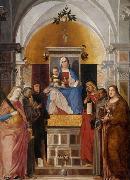 |
Marcello Fogolino
|
|
(active 1510-1548) was an Italian painter of the Renaissance or Mannerist style. Originally from the Friuli, he worked early in his life in Vicenza. Returning to Friuli in 1520-21, he came to reflect the painterly style of Il Pordenone. He completed a painting of Saints Francis and John the Baptist with Prophet Daniel for the Duomo in Pordenone. He was banished from Venice, for complicity in a murder in 1527, and went to Trento. He worked painting frescoes in the Tridentine region, including Castel Buonconsiglio, Castello Malpaga, Villa Salvotti, and Palazzo Sardagna.
|
|
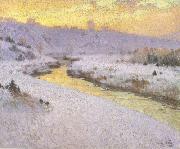 |
marc-aurele de foy suzor-cote
|
|
Canadian Painter, 1869-1937
was a Canadian painter and sculptor. He was born in Arthabaska, Quebec in 1869. He studied at the École des Beaux-Arts in Paris with L??on Bonnat during the 1890s. After his return to Quebec in 1908, he produced many impressionist paintings of the Quebec landscape, as well as portraits, nudes, historical paintings and later sculptures.
|
|
|
|
|
|
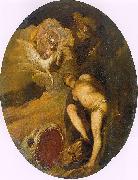 |
Maffei, Francesco
|
|
Italian Baroque Era Painter, 1605-1660
Italian painter. He probably trained with his father, Giacomo Maffei, before joining the workshop of the Maganza family in Vicenza. His early works, such as the Ecce homo (ex-Dianin priv. col., Padua, see Pallucchini, 1981,), were influenced by the eclectic style, between Veronese and the Bassani, of Alessandro Maganza. The St Nicholas and the Angel (1626; Vicenza, S Nicola da Tolentino), with colours like those of Veronese, yet lighter, suggests Maffei's rapid development of an independent style that is both rugged and moving. His interest in narrative, already evident in scenes from the Life of St Cajetan (Vicenza, S Stefano), was developed in the later Martyrdom of the Franciscan Minors at Nagasaki (Schio, S Francesco), which is datable to about 1630. Here, the contrast between the pale, silvery tones of the background and the darker foreground figures is derived from Tintoretto, but the exaggerated Mannerist treatment of the main figures also recalls the art of such French engravers as Jacques Bellange and Pierre Brebiette. At the same time there is also an echo of the extreme stylizations of Giovanni Demio.
|
|
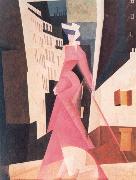 |
lyonel feininger
|
|
Painter, printmaker and illustrator. Although he was sent to Germany as a teenager to study music, a drawing class at the Kunstgewerbeschule in Hamburg instead sparked an interest in art, which led to further training at the Akademie der K-nste in Berlin and in 1892-3 at the Acad?mie Colarossi in Paris. Returning to Berlin, he was a prominent illustrator by the mid-1890s for Ulk, Lustige Bl?tter and other leading German satirical magazines. His work also appeared in the USA, first for Harper's Round Table in 1894 and 1895 and in 1906-7 in the comic strips 'The Kin-der-Kids' and 'Wee Willie Winkie's World' for the Chicago Sunday Tribune, by which time he was again in Paris. There he was also in contact with Wilhelm Uhde, Jules Pascin and other members of the circle that met at the Caf- du D?me and produced a series of drawings for Le T-moin. While often alluding to serious contemporary issues, the style of his illustrations and drawings was fanciful rather than grotesque.
|
|
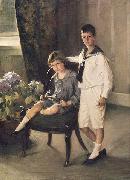 |
Lydia Field Emmet
|
|
(January 23, 1866 - August 16, 1952) was an American artist best known for her work as a portraitist. She studied with, among others, prominent artists such as William Merritt Chase, Henry Siddons Mowbray, Kenyon Cox and Tony Robert-Fleury. Emmet exhibited widely during her career, and her paintings can now be found hanging in the White House, and many prestigious art galleries, including the Metropolitan Museum of Art.
Emmet was born on January 23, 1866, at New Rochelle, New York, the seventh of ten children born to merchant William Jenkins Emmet and illustrator Julia Colt Pierson.
|
|
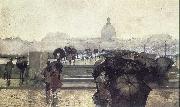 |
Lungren, Fernand Harvey
|
|
American Painter, ca.1857-1932
American painter and illustrator. Of Swedish descent, the family moved to Toledo, OH, when Lungren was four years old. He showed an early talent for drawing but was intended by his father for a professional career and in 1874 entered the University of Michigan, Ann Arbor, to study mining engineering. He left in 1876, however, determined to become an artist. After a protracted dispute with his father, he was allowed briefly to attend the Pennsylvania Academy in Philadelphia, where he studied under Thomas Eakins and had Robert Frederick Blum, Alfred Laurens Brennan (1853-1921) and Joseph Pennell as fellow students. In the winter of 1877 he moved to New York, where he worked as an illustrator for Scribner's Monthly (renamed Century in 1881) during the period known as 'the Golden Age of American illustration'. His first illustration appeared in 1879 and he continued to contribute to the magazine until 1903. He was also an illustrator for the children's magazine St Nicholas from 1879 to 1904 and later for Harper's Bazaar, McClure's and The Outlook.
|
|
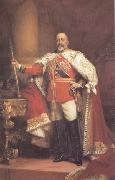 |
Luke Fildes
|
|
1844-1927
English painter and illustrator. He first studied art at the Mechanics Institute in Liverpool and at the nearby Warrington School of Art. In 1863 he won a scholarship that enabled him to study at the South Kensington Art School in London and subsequently at the Royal Academy Schools.
|
|
|
|
|
|
|
|
|
|
|
|
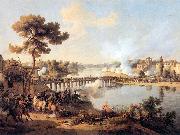 |
Louis-Francois, Baron Lejeune
|
|
(3 February 1775, Strasbourg - 29 February 1848) was a French general, painter, and lithographer. His memoirs have frequently been republished and his name is engraved on the Arc de Triomphe.
He studied painting in the studio of Pierre-Henri de Valenciennes, alongside Jean-Victor Bertin, but left the studio to volunteer in the Compagnie des arts de Paris in 1792. He received his baptism of fire in the battle of Valmy later that year. He became a sergeant in the 1st Arsenal battalion and in 1793 moved to the artillery at La Fere, assisting in the sieges of Landrecies, Le Quesnoy and Valenciennes. At Valenciennes he became aide-de-camp to general Jacob then, as a lieutenant on attachment to the engineers, took part in the 1794 Holland campaign and the 1795 campaign.
Called to the depot in 1798, he succeeded brilliantly in his exams and was made a captain on attachment to the engineers. He became aide-de-camp to marshal Berthier in 1800, a post he retained until 1812 and in which he took an active part in practically all of the Napoleonic campaigns. He was wounded and captured in Spain. He was promoted to full captain after Marengo and chef de bataillon after Austerlitz, also become a knight of the Legion d'honneur and a colonel at the Siege of Saragossa.
The German campaign of 1806 brought him to Munich, where he visited the workshop of Alois Senefelder, the inventor of lithography. Lejeune was fascinated by the possibilities of the new method and whilst there he made the drawing on stone of his famous Cossack (printed by C. and ~f. Senefelder, 1806). Whilst he was taking his dinner, and with his horses harnessed and waiting to take him back to Paris, one hundred proofs were printed, one of which he subsequently submitted to Napoleon. The introduction of lithography into France was greatly due to the efforts of Lejeune.
In 1812, during the French invasion of Russia, he was made general de brigade and chief of staff to Davout. Frostbitten on the face, Lejeune left his post during the retreat from Russia and was arrested on the orders of Napoleon. Freed in March 1813, Lejeune was then sent to the Illyrian provinces, before rejoining the army under the orders of marshal Oudinot, becoming his chief of staff. During the Saxony campaign, Lejeune was present at the Battle of Lutzen (1813), the crossing of the River Spree and at Bautzen. He was made an officer of the Legion d'honneur and a commander of the Order of Maximilian of Bavaria. At the battle of Hoyersverda, when Below's corps wiped out the 12th corps formed up in square on the plain, Lejeune (at risk of being kidnapped) ventured into the enemy lines with one battalion, general Wolf's cavalry and six 12 pounder guns. He thus broke the whole of the Prussian artillery and saved marshal Oudinot and his army. Wounded several times and lastly at Hanau, he was authorised to leave the army in November 1813 after more than 20 years' service. After his departure from the army, he devoted himself to painting.
|
|
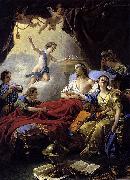 |
Louis Jean Francois Lagrenee
|
|
(December 30, 1724 - June 19, 1805) was a French painter, a pupil of Carlo Vanloo. His younger brother Jean-Jacques Lagren??e was also a painter.
Lagrenee was born in Paris. In 1755 he became a member of the Royal Academy, presenting as his diploma picture the Rape of Deianira (Louvre). He visited Saint Petersburg at the call of the empress Elizabeth, and on his return was named in 1781 director of the French Academy in Rome, a position he kept until 1787. He there painted the Indian Widow, one of his best-known works.
In 1804 Napoleon conferred on him the cross of the l??gion d'honneur, and on June 19, 1805 he died in the Louvre, of which he was honorary keeper.
|
|
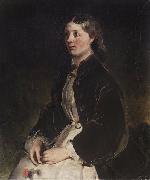 |
Louis Ferdinand von Rayski
|
|
Ferdinand von Rayski (1806 - 1890) was a German painter noted for his portraits.
Rayski was born in 1806 in Pegau. From 1816 to 1821 he studied drawing under Traugott Faber at the Freimaurerinstitut in Dresden and from 1823 to 1825 studied at Kunstakademie in Desseldorf. He began his career as a professional artist in 1829, painting portraits of his noble relatives in Hannover and Silesia. From 1831 to 1834 he lived in Dresden, where he received numerous portrait commissions. He traveled to Paris in 1834-35, and was influenced by the works of Delacroix, Gericault and Gros. Rayski gained a reputation as a distinguished portrait painter, but also produced animal and hunting scenes, as well as, yet less frequently, military, historical and mythological paintings. He lived in Dresden from 1840 until his death in 1890.
|
|
|
|
 |
Louis D. Fancher
|
|
December 25, 1884-March 2, 1944) was an American artist and illustrator, notable for his drawings that appeared in books, in magazines, and on propaganda posters during World War.
Fancher was born in Minneapolis, Minnesota in 1884 and was a student of Henry Siddons Mowbray, Robert Henri, and Kenyon Cox. He was active in San Francisco as well as in New York, where he lived most of his life.
|
|
|
|
|
|
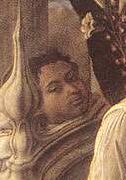 |
LIPPI, Fra Filippo
|
|
Italian Early Renaissance Painter, ca.1406-1469
Filippo Lippi was born in Florence. He took his vows in 1421 in the monastery S. Maria del Carmine, where Masaccio frescoed the Brancacci Chapel in the church (1426-1427). By 1430 Lippi is mentioned in church documents as "painter." Masaccio's influence, as well as Donatello's, can be seen in Lippi's early works, such as the Tarquinia Madonna of 1437 (National Gallery, Rome) and the Annunciation (S. Lorenzo, Florence) and Barbadori Altar (Louvre, Paris), both begun in 1437/1438. However, the severity of Masaccio and Donatello was mitigated by Lippi, who was instrumental in salvaging from the Gothic past the lyrical expressiveness of a linear mode which Masaccio had all but given up for modeling in chiaroscuro. Toward the middle of the 15th century Lippi's pictures became more finely articulated and his surface design more complex. It is probable that he had a large workshop, and the hand of assistants may be observed in the important fresco decoration started in 1452 in the choir chapel of the Prato Cathedral. After delays and strong protests this commission was finally completed in 1466. The cycle, a highly important monument of Early Renaissance painting, demonstrates Lippi's increasingly more mature style, revealing him to be witty, original, and well versed in all the artistic accomplishments of his time, to which he himself contributed. Through linear perspective Lippi was able to render a convincing illusion of recession and plausible three-dimensional figures. He knew how to express emotions, and he was a keen observer of nature. Lippi painted astonishing portrait likenesses and combined figures and space with an animated surface rhythm, the best example of which can be seen in the Feast of Herod, one of the last scenes in the Prato cycle. During his stay at Prato he was the cause of a scandal (later resolved by papal indulgence): he ran off with a nun, Lucrezia Buti, who bore him two children, one of whom, Filippino Lippi (ca. 1457-1504), was also a painter. In the Prato frescoes as well as in his contemporary panel pictures, such as the Madonna with Two Angels (Uffizi Gallery, Florence), or in the exquisite tondo of the Madonna (Pitti Palace, Florence), Filippo Lippi anticipated later developments in 15th-century painting. In these pictures are to be found the sources of Sandro Botticelli, Lippi's most illustrious pupil. Lippi's innovations extended also to iconography. In his quest for realism he introduced the "bourgeoise" Madonna: the type of contemporary Florentine lady elegantly dressed in the fashion of the time with the hair on her forehead plucked to stress the height of it. He also introduced the subject of the Madonna adoring the Child in the woods (Museum of Berlin, and Uffizi, Florence).
|
|
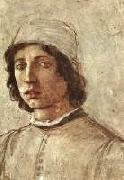 |
LIPPI, Filippino
|
|
Italian Early Renaissance Painter, ca.1457-1504
Son of Filippo Lippi. He was a painter of altarpieces, cassone panels and frescoes and also an exceptional draughtsman. His success lay in his ability to absorb, without slavishly following, the most popular trends in contemporary painting. He worked in Florence and Rome at a time when patrons were beginning to intermingle personal, religious, social and political ideals in their ambitions for palaces and chapels: with the support of wealthy and erudite patrons, such as Lorenzo de' Medici and Filippo Strozzi, he won important civic and private commissions.
|
|
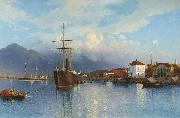 |
Lev Feliksovich Lagorio
|
|
(Russian: 1828-1905) was a Russian painter, known for his paintings of seascapes.
Lagorio was born in Feodosia, Crimea (now Ukraine) and later studied in the Imperial Academy of Arts in Saint Petersburg. His teachers were Maxim Vorobiev and B. P. Villeval'de. While he lived in Feodosia, he was influenced by the painter Ivan Aivazovsky. In 1845 Lagorio went on a sea voyage on the warship Groziashchy to study the arrangement of the ship.
Lagorio spent eight years in Italy. The paintings he created there brought him to the status of professor on his return home to Russia.
In his later years, he painted the coastal views of Finland and Norway. He also painted motives of the Russian-Turkish war.
|
|
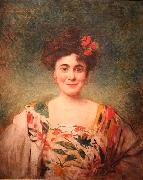 |
Leon Joseph Florentin Bonnat
|
|
(20 June 1833 - 8 September 1922) was a French painter.
He was born in Bayonne, but from 1846 to 1853 he lived in Madrid, where his father owned a bookshop. While tending his father's shop, he copied engravings of works by the Old Masters, developing a passion for drawing. In Madrid he received his artistic training under Madrazo. He later worked in Paris, where he became known as a leading portraitist, never without a commission. His many portraits show the influence of Velezquez, Jusepe de Ribera and other Spanish masters, as well as Titian and Van Dyke, whose works he studied in the Prado. Following the period in Spain Bonnat worked the ateliers of the history painters Paul Delaroche and Leon Cogniet (1854) in Paris. Despite repeated attempts, he failed to win the prix de Rome, finally receiving only a second prize. However, a scholarship from his native Bayonne allowed him to spend three years in Rome (1858 - 60) independently. During his stay in Rome, he became friends with Edgar Degas, Gustave Moreau, Jean-Jacques Henner and the sculptor Henri Chapu.
He won a medal of honor in Paris in 1869, going on to become one of the leading artists of his day. Bonnat went on to win the Grand Officer of the Legion d'honneur and became a professor at the Ecole des Beaux Arts in 1882. Bonnat was quite popular with American students in Paris. In addition to his native French, he spoke Spanish and Italian and knew English well, to the relief of many monolingual Americans. In May 1905 he succeeded Paul Dubois as director of the Ecole des Beaux-Arts. Bonnat "was a liberal teacher who stressed simplicity in art above high academic finish, as well as overall effect rather than detail," explains Julius Kaplan (see References). Bonnat's emphasis on overall effect on the one hand, and rigorous drawing on the other, put him in a middle position with respect to the Impressionists and academic painters like his friend Jean-Leon Gerôme.
|
|
|
|
|
|
|
|
|
|
|
| Wholesale China Oil Painting Wholesale Oil Painting China Xiamen Portrait Reproduction on canvas Chinese Oil Painting Wholesale USA Oil Painting |
|
|
|
|
|